Wilmington, North Carolina, Hgh State Clinic, Hgh Injections, Hrt Doctors
Wilmington, North Carolina Blood Testing Facilities
 Represents a LabCorp blood testing facility
Represents a LabCorp blood testing facility Represents a Quest Diagnostics blood testing facility
Represents a Quest Diagnostics blood testing facility
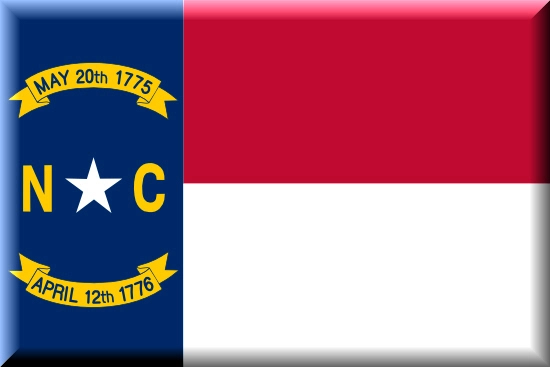
Nearby Labcorp Blood Testing facilities:
- Labcorp Center Distance: 2 m, 2505 Delaney Rd, Wilmington, New Hanover County, NC, 28403
- Labcorp Center Distance: 47 m, 7 Office Park Drive Suite 2, Jacksonville, Onslow County, NC, 28546
- Labcorp Center Distance: 60 m, 1021 Cipriana Drive Ste 260, Myrtle Beach, Horry County, SC, 29572
- Labcorp Center Distance: 70 m, 812 Farrar Dr Ste A, Conway, Horry County, SC, 29526
- Labcorp Center Distance: 74 m, 1945 Glenns Bay Road, Surfside Beach, Horry County, SC, 29575
- Labcorp Center Distance: 75 m, 2111B N Queen St, Kinston, Lenoir County, NC, 28501
- Labcorp Center Distance: 79 m, 4017 Hwy 17S Suite 202, Murrells Inlet, Georgetown County, SC, 29576
- Labcorp Center Distance: 80 m, 2400 Wayne Memorial Dr. Ste E, Goldsboro, Wayne County, NC, 27534
- Labcorp Center Distance: 83 m, 301 E Jackson St, Dillon, Dillon County, SC, 29536
- Labcorp Center Distance: 90 m, 328 N Brightleaf Blvd, Smithfield, Johnston County, NC, 27577
- Labcorp Center Distance: 95 m, 100 South 10Th Street, Lillington, Harnett County, NC, 27546
- Labcorp Center Distance: 98 m, 2210 Hemby Lane Suite 101, Greenville, Pitt County, NC, 27834
Nearby Quest Blood Testing facilities:
- Quest Center Distance: 2 m, 2032 S 17Th St, Wilmington, New Hanover County, NC, 28401-6678
- Quest Center Distance: 47 m, 200 Doctors Dr, Jacksonville, Onslow County, NC, 28546-6308
- Quest Center Distance: 60 m, 909 Medical Cir, Myrtle Beach, Horry County, SC, 29572-4116
- Quest Center Distance: 79 m, 1840 Owen Dr, Fayetteville, Cumberland County, NC, 28304-3455
- Quest Center Distance: 80 m, 2400 Wayne Memorial Dr, Goldsboro, Wayne County, NC, 27534-1750
- Quest Center Distance: 88 m, 3333 Nc Highway 242 N, Benson, Johnston County, NC, 27504-7844
- Quest Center Distance: 98 m, 2070 West Arlington Blvd, Greenville, Pitt County, NC, 27834-3769
North Carolina Hormone Replacement Therapy Services
Human Growth Hormone Injections in North Carolina
Did you know that Hormone Imbalance is one of the strongest pressures which contribute to premature aging? As we grow older, HGH Levels start to decline, and we start to age more quickly as a direct result. Many men and women over the age of 30 suffer from Age-Related Growth Hormone Deficiency, a condition which exacerbates the aging process, severely damaging both health and well-being
The Conscious Evolution Institute offers Physician-Monitored HGH Injections for the treatment of Growth Hormone Decline. We can get you the help you need to restore your hormone balance and boost your health. We can help you buy the HGH you need and even ship it to your doorstep.
Sermorelin Acetate Therapy Services in North Carolina
We also offer Sermorelin Treatments as an alternative to HGH Shots. Both are highly effective at restoring natural and youthful hormone balance, but Sermorelin does so by helping your body make more HGH on its own, rather than supplementing the body's diminishing supply.
Many people prefer Sermorelin Acetate because it's cheaper than Human Growth Hormone Replacement Therapy, but others feel that the results of HGH Injections are more noticeable. One of our clinical physicians will help you make the best decision for your health and your wallet.
North Carolina Low-T Treatments
Along with HGH Restoration, we also provide Testosterone Replacement Therapy for the treatment of Erectile Dysfunction and Testosterone Deficiency. Many men turn to pills as a means to restore their sexual potency, but these pills may simply be masking underlying problems that are eating away at your health.
Testosterone is a vitally important hormone for male health, and ED Pills do nothing to restore hormone balance, they simply alter your blood flow to foster easier sexual activity. Men with Testosterone Deficiency are more prone to Age-Related Disorders such as diabetes and obesity, and they are at significantly increased risk of other metabolism disorders, as well as cardiovascular disease, heart attack and stroke.
Women can also benefit from Testosterone Replacement as a means to mitigate the effects of menopause, strengthen the bones, and restore sex drive.
The HCG Diet for North Carolina Residents
Are you overweight? Do you have chronic health issues that are exacerbated by obesity? The Conscious Evolution Institute can help you solve your weight problems with our highly effective HCG Diet. HCG is short for Human Chorionic Gonadotropin, and this natural biological hormone has been shown to be an effective weight loss aid.
HCG Injections, when combined with a restricted diet, encourage the body to burn pesky reserves of adipose fat, while also helping sustain energy levels, preventing the fatigue normally associated with accelerated weight loss. HCG has the special ability to mask feelings of hunger, helping you avoid the temptation of unhealthy foods, helping you lose weight quickly as well as responsibly.
Largest Metropolitan Areas of North Carolina
Charlotte
Charlotte is the biggest city and metro area in the state of North Carolina. Charlotte also goes by the nickname of The Queen City, as it was named after King George III wife, Queen Charlotte. Charlotte is highly valuable to the American economy primarily because of its vital importance as a banking center. The only city in the United States that houses financial institutions with a greater net worth is New York City. The city is also home to a number of Fortune 500 companies.
Charlotte also has a strong professional sports presence, bulwarked by the Charlotte Panthers and the Charlotte Bobcats. The city is also home to a number of colleges, including the University of Charlotte and UNC-Charlotte.
Raleigh
Raleigh, North Carolina is the second largest city in the state, as well as its capital. Raleigh also goes by the nickname of The City of Oaks, because of its multitude of Oak Trees which are planted all throughout the city. Like Charlotte, Raleigh has a strong financial presence, but it is most well-known for its medical and high-tech research.
The city of Raleigh is one of the cities on Tobacco Road, the region of North Carolina with the most competitive college basketball in the United States. Raleigh is the home of NC State University. Raleigh is also home to the NHL team, the Carolina Hurricanes.
Greensboro
Greensboro is the central city of the Piedmont Triad region of North Carolina, and is the third most populated city in the state. Greensboro has a surprisingly active arts community, with an emphasis on theater, contemporary, and classical music. The most prestigious sports competition held in the Greensboro area is the FedEx Cup.
There are a number of small colleges and universities in Greensboro, a couple of the most notable of which are the Elon Law School and UNC-Greensboro. Greensboro has been historically known for its strong textile industry, as well as being a center of tobacco processing and distribution.
Winston-Salem
Winston-Salem is the fourth largest metropolitan population in the state, and is another city in the Piedmont Triad area, along with Greensboro. Winston-Salem is probably most well-known as a center of the tobacco industry, and the home of R.J. Reynolds, the maker of Camel Cigarettes.
Like Greensboro, Winston-Salem also has an active arts and cultural community, with an emphasis on theater and fine arts. The most well-recognized university in the Winston-Salem area is Wake Forest University. The largest industries in Winston-Salem are Health Care, Fabrication, and Retail.
Durham
Durham is most famous for being the home of Duke University, and Chapel Hill is the home of the University of North Carolina. The two universities are only ten miles apart, and are the foundation of Tobacco Road, as well as representing the biggest basketball rivalry in the United States. Durham has a strong contemporary music scene, and has contributed a number of bands and artists to the national landscape, including The Mountain Goats and the Carolina Chocolate Drops.
Duke University and its hospitals are the biggest employers of Durham, but there is also a strong high-tech presence, the largest representatives of which are GlaxoSmithKline and IBM. Forbes' has listed Durham as one of the best cities in the United States to start a career.
All About Wilmington, North Carolina Geographic Area
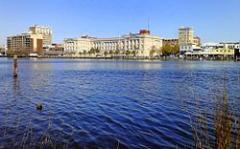

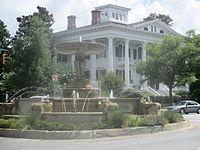
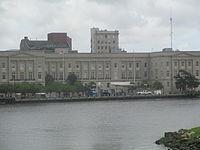
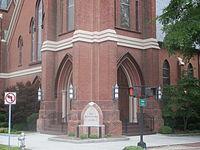
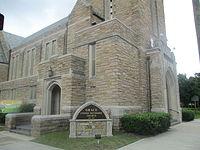
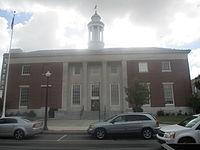
Wilmington is a port city in and is the county seat of New Hanover County in coastal southeastern North Carolina, United States. The population is 106,476; according to the 2010 Census it is the eighth most populous city in the state. Wilmington is the principal city of the Wilmington Metropolitan Statistical Area, a metropolitan area that includes New Hanover, Brunswick, and Pender counties in southeastern North Carolina, which has a population of 362,315 as of the 2010 Census.
Wilmington was settled by European Americans along the Cape Fear River. Its historic downtown has a one-mile-long Riverwalk, developed as a tourist attraction. It is minutes away from nearby beaches. The National Trust for Historic Preservation named Wilmington, North Carolina, one of its 2008 Dozen Distinctive Destinations. City residents live between the river and the ocean, with three nearby beach communities: Wrightsville Beach, Carolina Beach, and Kure Beach all within half-hour drives from downtown Wilmington.
In 2003 the city was designated by the US Congress, as "A Coast Guard City". It is home port for the USCGC Diligence (WMEC-616), a United States Coast Guard medium endurance cutter.
The World War II battleship USS North Carolina (BB-55) is held as a war memorial; located across from the downtown port area, the ship is open to public tours. Other attractions include the Cape Fear Museum, the Wilmington Hammerheads United Soccer Leagues soccer team, and the training camp site for the Charlotte Bobcats. The University of North Carolina Wilmington (UNCW) provides a wide variety of programs for undergraduates, graduate students and adult learners, in addition to cultural and sports events open to the community.
Wilmington is the home of EUE Screen Gems Studios, the largest domestic television and movie production facility outside of California. "Dream Stage 10," the facility's newest sound stage, is the third-largest in the US. It houses the largest special-effects water tank in North America. Since the studio's opening in 1984, Wilmington has become a major center of American film and television production. Numerous movies in a range of genres and several television series have been produced there.
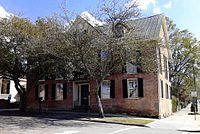
The area had long been inhabited by indigenous peoples; at the time of European encounter, historic Native Americans were tribes belonging to the Algonquian language family.
The ethnic European and African history of Wilmington spans more than two and a half centuries. Although Giovanni da Verrazano is reportedly the first European to observe the area, including its present site in the early 16th century, the city was not settled by the English and European immigrants until much later. They imported Africans as slave laborers. It was not until the 1720s that English colonists began settling in the area. In 1733, a new community was founded on land owned by John Watson on the Cape Fear River, at the confluence of its northwest and northeast branches. The settlement was first called "New Carthage," then "New Liverpool," but gradually took on the name of "New Town" or "Newton". Governor Gabriel Johnston soon after established his provincial government there for the North Carolina colony. In 1739/40, the town was incorporated under a new name, Wilmington, in honor of Spencer Compton, Earl of Wilmington.
Some early settlers of Wilmington came from the Albemarle and Pamlico regions of the state, as well as Virginia and South Carolina. Most new settlers arrived from the northern colonies, the West Indies, and the British Isles. Most of the settlers were indentured servants aemainly of European origin. The colonists also imported an increasing number of African slaves into the port city. By 1767, slaves accounted for more than 62% of the population of the Lower Cape Fear region. Many worked in the port as laborers, and some in ship-related trades.
The region exploited forest resources for its major industries through the 18th and most of the 19th centuries: naval stores and lumber fueled the economy both before and after the American Revolution. During the Revolutionary War, the British maintained a garrison at Fort Johnson near Wilmington.
Wilmington's commercial importance as a major port afforded it a critical role in opposition to the British in the years leading up to the Revolution. Additionally, the city was home to outspoken political leaders who influenced and led the resistance movement in North Carolina. The foremost of these was Wilmington resident Cornelius Harnett, who served in the General Assembly at the time, where he rallied opposition to the Sugar Act in 1764. When the British Parliament passed the Stamp Act the following year, designed to raise revenue for the Crown with a kind of tax, Wilmington was the site of an elaborate demonstration against it.
On October 19, 1765, several hundred townspeople gathered in protest of the new law, burned an effigy of one town resident who favored the act, and toasted to "Liberty, Property, and No Stamp Duty." On October 31, another crowd gathered in a symbolic funeral of "Liberty". But before the effigy was buried, it was found that Liberty still had a pulse, and celebration ensued.
Dr. William Houston of Duplin County was appointed Stamp Receiver for Cape Fear. When Houston visited Wilmington on business, still unaware of his appointment, he recounted,
"The Inhabitants immediately assembled about me & demanded a Categorical Answer whether I intended to put the Act relating [to] the Stamps in force. The Town Bell was rung[,] Drums [were] beating, Colours [were] flying and [a] great concourse of People [were] gathered together." For the sake of his own life, and "to quiet the Minds of the inraged [sic] and furious Mobb...," Houston resigned his position at the courthouse.
Governor William Tryon made attempts to mitigate the opposition to no avail. On November 18, 1765, he pled his case directly to prominent residents of the area. They said the law restricted their rights. When the stamps arrived on November 28 on the H.M. Sloop Diligence, Tryon ordered them to be kept on board. Shipping on the Cape Fear River was stopped, as did the functions of the courts.
Tryon, after having received his official commission as governor (a position he had only assumed after the death of Arthur Dobbs), was brought to Wilmington by Captain Constantine Phipps on a barge from the Diligence, and "was received cordially by the gentlemen of the borough." He was greeted with the firing of seventeen pieces of artillery, and the New Hanover County regiment of militia who had lined the streets. This "warm welcome" was spoiled, however, after a dispute arose between Captain Phipps and captains of ships in the harbor regarding the display of their colors. The townspeople became infuriated with Phipps and threats were made against both sides. After Tryon harangued them for their actions, the townspeople gathered around the barrels of punch and ox he had brought as refreshments. The barrels were broken open, letting the punch spill into the streets; they threw the head of the ox into the pillory, and gave its body to the slaves. Tryon moved his seat of government to New Bern instead of Wilmington.
On February 18, 1766, two merchant ships arrived at Brunswick, without stamped papers. Each ship provided signed statements from the collectors at their respective ports of origin that there were no stamps available, but Captain Jacob Lobb of the British cruiser Viper seized the vessels. In response, numerous residents from southern counties met in Wilmington. The group organized as the Sons of Liberty and pledged to block implementation of the Stamp Act. The following day, as many as a thousand men, including the mayor and aldermen of Wilmington, were led by Cornelius Harnett to Brunswick to confront Tryon. The governor was unyielding to their defiance but a mob retrieved the seized ships. They forced royal customs officers and public officials in the region to swear never to issue stamped paper. Parliament repealed the Stamp Act in March 1766.
In the 1830s, citizens of Wilmington became eager to take advantage of railroad transportation. Plans were developed to build a railroad line from the capital of Raleigh to Wilmington. This was later changed when the citizens of Raleigh did not care to make the venture of a stock subscription to secure the railroad. The end point was changed to Weldon. When construction of the railroad line was finally completed in 1840, it was the longest single line of railroad track in the world. The railroad also controlled a line of steamboats that ran from Wilmington to Charleston; it was widely used for passenger travel and transportation of freight. Regular boat lines served Fayetteville, and packet lines traveled to northern ports. The city was a main stop-over point, contributing greatly to its commerce.
By mid-century, the churchyard of St. James Episcopal Church and other town cemeteries had become filled with graves. On November 16, 1853, a group of citizens, organized as "The Proprietors of the Wilmington Cemetery," was formed to develop a new cemetery. Sixty-five acres of land around Burnt Mill Creek was chosen as the site for what would be called Oakdale Cemetery. It was the first rural cemetery in North Carolina. The cemetery's first interment, on February 6, 1855, was six year-old Annie DeRosset. Many remains from St. James churchyard were relocated to the new cemetery.
The Wilmington Gas Light Company was established in 1854. Soon after, street lights were powered by gas made from lightwood and rosin, replacing the old street oil lamps. On December 27, 1855, the first cornerstone was laid and construction began on a new City Hall. A grant from the Thalian Association funded the attached opera house, named Thalian Hall. The city opened its first public school, named the "Union Free School", in 1857 on 6th Street between Nun and Church Streets. It was for white students only.
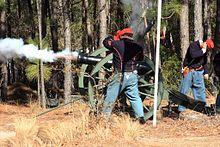
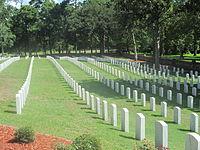
During the Civil War, the port was the major and busiest base for Confederate and privately owned blockade runners delivering badly needed supplies from England. It was captured by Union forces in the Battle of Wilmington in February 1865, approximately one month after the fall of Fort Fisher had closed the port. As nearly all the military action took place some distance from the city, a number of antebellum houses and other buildings survived the war years.
The Wilmington Insurrection of 1898 (formerly called a race riot) occurred as a result of the racially charged political conflict that had occurred in the decades after the Civil War and efforts to establish white supremacy. In the 1870s, the Red Shirts, a white paramilitary organization, used violence and intimidation to suppress black voting, helping Democrats to regain power in the state legislature and end Reconstruction. In 1898, a cadre of white Democrats, professionals and businessmen, planned to overthrow the city government if their candidates were not elected. Two days after the election, more than 1500 white men attacked and burned the only black newspaper in the state and ran off the white Republican mayor and aldermen (both white and black), overthrowing the legitimately elected municipal government. This is the only such coup d'etat in United States history.
On November 10, 1898, nearly 1500 white men, led by the Democrat Alfred M. Waddell, an unsuccessful gubernatorial candidate in 1896, marched to the offices of the Daily Record, as they had been angered by its publisher Alex Manly. The mob broke out of control, shattering windows and setting fire to the building. Violence later broke out across town in Brooklyn, the black neighborhood that was attacked by mobs of whites. Waddell and his men forced the elected Republican city officials to resign at gunpoint and replaced them with men selected by leading white Democrats. Waddell was elected mayor by the newly seated board of aldermen that day. Prominent African Americans and white Republicans were banished from the city in the following days.
Whites attacked and killed an estimated 10-100 blacks. No whites died in the violence. As a result of the attacks, more than 2100 blacks permanently left the city, leaving a hole among its professional and middle class. It became majority white, rather than the majority black it was before the white Democrats' coup.
Following these events, the North Carolina legislature passed a new constitution with voter registration requirements for poll taxes and literacy tests that effectively disfranchised black voters, following the example of the state of Mississippi. Blacks were essentially disfranchised until after Congressional passage of the civil rights acts of the mid-1960s.


During World War II, Wilmington was the home of the North Carolina Shipbuilding Company. The shipyard was created as part of the U.S. government's Emergency Shipbuilding Program. Workers built 243 ships in Wilmington during the five years the company operated.
The city was the site of three prisoner-of-war (POW) camps from February 1944 through April 1946. At their peak, the camps held 550 German prisoners. The first camp was located on the corner of Shipyard Boulevard and Carolina Beach Road; it was moved downtown to Ann Street, between 8th and 10th avenues, when it outgrew the original location. A smaller contingent of prisoners was assigned to a third site, working in the officers ao mess and doing grounds keeping at Bluethenthal Army Air Base, which is now Wilmington International Airport.
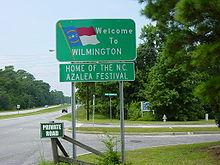
Wilmington is located at 34 °13 a²24 a³N 77 °54 a²44 a³W / 34.22333 °N 77.91222 °W / 34.22333; -77.91222 (34.223232, -77.912122). It is the Eastern Terminus of a major East-West Interstate 40 which ends at Barstow, California, where it joins I-15, the Gateway to Southern California, some 2,554 miles away, passing through many major cities and state capitals along the way.
According to the United States Census Bureau, the city has a total area of 41.5 square miles (107 km2). 41.0 square miles (106 km2) of it is land and 0.5 square miles (1.3 km2) of it (1.16%) is water.
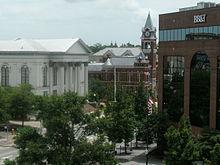
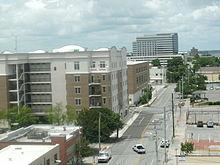
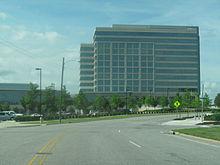
Wilmington boasts one of the largest historic districts encompassing nearly 300 blocks. Old abandoned warehouses on downtown's northern end have been recently demolished making room for multi-million dollar projects such as PPD's World Headquarters and a state of the art convention center due to officially open in January 2011.
Downtown/Old Wilmington is home to Historic Neighborhoods and buildings such as the Sir Water Wilmington Hotel, built during the late 20th century, and the restored City Market.
Wilmington's industrial base includes electrical, medical, electronic and telecommunications equipment; clothing and apparel; food processing; paper products; nuclear fuel; and pharmaceuticals. Wilmington is part of North Carolina's Research coast, adjacent to the Research Triangle Park in Raleigh, NC.
Also important to Wilmington's economy is tourism due to its close proximity to the ocean and vibrant nightlife. Film production has grown to play an important role in the city's economy. Wilmington North Carolina was #2 in the Nation in a national study for 2007 projected job growth. This list of 25 top cities, compiled by the Milken Institute, an Economic "Think Tank" based in California, also included the NC cities of Charlotte and Raleigh.
Between 2006 and 2008, crime rates, as reported through the Federal Bureau of Investigation's Uniform Crime Reports, decreased in 6 of the 8 reported categories.
As of the census of 2010, there were 106,476 people, 53,400 households in the city. The population density was 2,067.8 people per square mile (714.2/km ²)and there were 47,799 housing units. The racial composition of the city was: 73.5% White, 19.9% Black or African American, 6.1% Hispanic or Latino American, 1.2% Asian American, 0.1% Native American, 0.1% Native Hawaiian or other Pacific Islander.
There were 34,359 households out of which 20.4% had children under the age of 18 living with them, 33.5% were married couples living together, 14.0% had a female householder with no husband present, and 49.5% were non-families. 36.6% of all households were made up of individuals and 11.3% had someone living alone who was 65 years of age or older. The average household size was 2.10 and the average family size was 2.77.
In the city the population was spread out with 18.4% under the age of 18, 17.2% from 18 to 24, 28.5% from 25 to 44, 20.6% from 45 to 64, and 15.3% who were 65 years of age or older. The median age was 34 years. For every 100 females there were 87.5 males. For every 100 females age 18 and over, there were 85.0 males.
The median income for a household in the city was $31,099, and the median income for a family was $41,891. Males had a median income of $30,803 versus $23,423 for females. The per capita income for the city was $21,503. About 13.3% of families and 19.6% of the population were below the poverty line, including 25.9% of those under age 18 and 12.0% of those age 65 or over.
The Wilmington International Airport (ILM) serves the area with commercial air service provided by Allegiant Air, American Airlines, Delta Air Lines and US Airways. US Airways carries a large share of the airport's traffic, and therefore flies the largest of the aircraft in and out of the airport. The airport serves over 800,000 travelers per year. This very airport was the original idea of the Wright Brothers which was spread on until enough funds were created to make it. The airport is also home to two fixed base operations (FBO's) which currently house over 100 private aircraft. The airport maintains a separate International Terminal providing a full service Federal Inspection Station to clear international flights. This includes U.S. Customs and Border Protection, U.S. Dept of Agriculture and the U.S. Dept of Immigration. The airport is 4 miles from downtown.
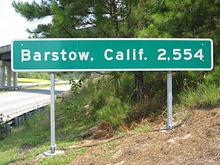
Public transit in the area is provided by the Cape Fear Public Transportation Authority, which operates fixed bus routes, shuttles, and a free downtown trolley under the brand name Wave Transit. A daily intercity bus service to Raleigh is provided by Greyhound Lines.
The NC-DOT Cape Fear Run bicycle route connects Apex to Wilmington and closely parallels the RUSA 600 km brevet route.
The City of Wilmington offers transient docking facilities in the center of Downtown Wilmington along the Cape Fear River approximately 12.5 miles from the Intracoastal Waterway. The river depth in the run up from the ICW is in excess of 40 feet. Taxicab service is available from several vendors, however, as the price of fuel rises, yet the City's Taxi Commission keeps meter rates artificially low, there is a real likelihood that no drivers will continue to work, as their income, before taxes, now averages 30% of what it was in 1998.
Wilmington experienced staggering growth in the 1990s, ranking at one point as the second fastest growing city in the country, behind only Las Vegas, Nevada. Economists have forecast growth in the Greater Wilmington area to be the fastest in the state between 2004 and 2010, averaging 7%.
Wilmington Ranks #32nd in the nation on Forbes Magazine's "Best Places for Business and Careers" 2010.
Wilmington Ranks #14 in the nation on Fortune Small Business Magazine's "Best Places for a Start-Up"
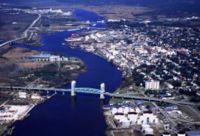
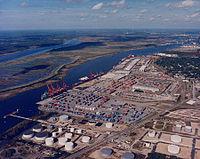
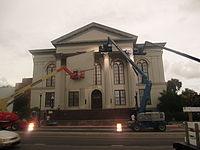
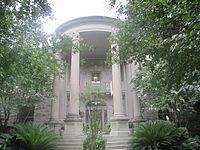
Located on the Cape Fear River, which flows into the Atlantic Ocean, Wilmington is a sizable seaport, including private marine terminals and the North Carolina State Ports Authority's Port of Wilmington.
Wilmington is home to the Greater Wilmington Chamber of Commerce, the oldest Chamber in North Carolina, organized in 1853.
According to the City's 2010 Comprehensive Annual Financial Report, the top employers in the city are:
Public Schools in Wilmington are operated by the New Hanover County Public School System.
The city supports a very active calendar with its showcase theater, the Thalian Hall Center for the Performing Arts, hosting about 250 events annually. The complex has been in continuous operation since it opened in 1858 and houses three performance venues, the Main Stage, the Grand Ballroom, and the Studio Theater.
The University of North Carolina at Wilmington College of Arts and Science Departments of Theatre, Music and Art share a state-of-the-art, $34 million Cultural Arts Building which opened in December 2006. The production area consists of a music recital hall, art gallery, and two theaters. Sponsored events include 4 theater productions a year.
Local stages include:
Since 1995, Wilmington hosts an annual, nationally recognized, independent film festival, the "Cucalorus". It is the keystone event of The Cucalorus Film Foundation, a 501(c)3 non-profit organization. The Foundation also sponsors weekly screenings, several short documentary projects and the annual Kids Festival, with hands on film-making workshops.
The Wilmington Symphony Orchestra was established in 1971 and offers throughout the year a series of five classical performances, and a Free Family Concert. Wilmington is also home to numerous music festivals.
One of the largest DIY festivals, the Wilmington Exchange Festival, occurs over a period of 5 days around Memorial Day each year. It is currently in its 13th year.
Celebrating its 29th year, the North Carolina Jazz Festival is a three-day traditional jazz festival which features world-renowned jazz musicians.
The Cape Fear Blues Society is a driving force behind Blues music in Wilmington, N.C. The organization manages, staffs and sponsors weekly Cape Fear Blues Jams and the annual Cape Fear Blues Challenge talent competition (winners travel to Memphis TN for the International Blues Challenge). Its largest endeavor is the Cape Fear Blues Festival, an annual celebration that showcases local, regional & national touring Blues artists performing at a variety of events and venues, including the Cape Fear Blues Cruise, Blues Workshops, an All-Day Blues Jam, and numerous live club shows. Membership in the CFBS is open to listeners and musicians alike.
The local music scene in Wilmington, NC is also very diverse and abundant. The Soapbox Bar and Lounge in downtown Wilmington is known for having the greatest bands around come and play. With bands like Rio Bravo which bring a more modern style of music to wilmington or bands like Root Soul Project, which is exactly what it says it is; music for the soul. Another popular venue is The Rusty Nail at 1310 S. 5th Ave. The Nail is likely the closest thing you'll find to an authentic juke joint in Wilmington and it regularly features Blues, Jazz and Americana music.
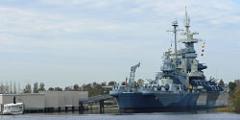
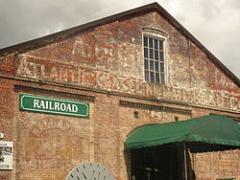
The Whiskey on South Front Street is suitable to catch a show and friendly buzz. It is located near the river front, along with other enterprises.
Wilmington is also a popular spot for Carolina shag dancing.
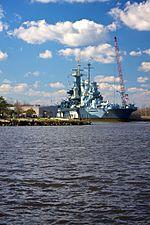
The Star-News is Wilmington's daily newspaper; read widely throughout the Lower Cape Fear region and now owned by the New York Times. Two historic black newspapers are distributed and published weekly -- The Wilmington Journal and The Challenger Newspapers. Encore Magazine is a weekly arts and entertainment publication.
Word Count: 4678






